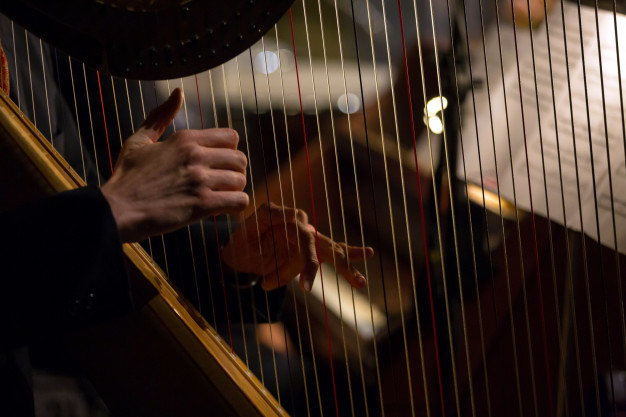9 Common Causes of Eczema, Vulnerable to Air Temperature
Eczema is a skin condition that causes inflammation and irritation. These are the common causes of eczema that can be triggered by various factors.

Kapanlagi.com - Music is one of the most popular and highly appreciated arts. Not only for enjoyment, many people are also interested in learning music. As a result, there are many terms about music that are also familiar to the general public, one of which is birama. Birama is one of the elements in music that is quite important.
The term birama may already be familiar to the general public. However, not everyone knows the definition and function of birama in a song or music. In fact, birama is quite vital in music. Birama serves as a sign or beat for the change of melody in a song or music.
It is important to understand what birama is, especially for those of you who are interested in learning music more deeply. Summarized from various sources, here is an explanation of the ins and outs of birama.

(credit: freepik)
As mentioned earlier, birama is one of the important elements in the art of music. In a song or piece of music, birama takes the form of beats. According to liputan6.com, generally, birama serves to determine the number of counts and the value of each count while making music.
In a song or musical composition, birama appears in the form of repeated and regular beats. In its notation, each line of birama is separated by a vertical line. Birama can be found in various types of music. However, birama is more easily found in diatonic music compared to pentatonic music.
Furthermore, generally, birama is divided into two types. The two types of birama are arsis and aksen. Arsis refers to light birama, while aksen refers to birama that tends to be strong.

(credit: freepik)
Rhythm is indeed part of the elements of music art. However, within rhythm itself, there are also several elements. So, to understand what rhythm is, you also need to recognize its elements. The elements of rhythm are as follows.
1. Elements of heavy and light stressed sound.
2. Elements of empty space or silence, although the silence still counts as time.
3. Elements of time marked by counting value.
Etymologically, rhythm means beats. The existence of rhythm that appears repeatedly in a song or musical tune has a very important role. In fact, rhythm is so important that it serves two functions, namely symbol function and musical function. The explanations of the two functions of rhythm are as follows.
1. Symbol Function
Rhythm is a sign that indicates the number of beats in one measure of rhythm. As mentioned earlier, each measure of rhythm is separated by a vertical line. As a symbol function, rhythm is often represented by numbers such as 4/4, 3/4, 6/8, to 2/4, and so on. These numerical symbols also become types of rhythm.
2. Musical Function
The second function of rhythm is the musical function. It means that rhythm functions to build rhythm in its musical function. The rhythm in a song is formed by repeated and united measures of rhythm. In addition, the musical function also indicates the unit of rhythm that repeats, consisting of two high and low sounds. The harmony of the two will eventually build rhythm.

(credit: freepik)
Based on the function of the symbols explained earlier, rhythm is divided into several types. The division of rhythm types is based on the number of beats. Here are some common types of rhythm that are important to know.
1. 4/4 Rhythm
4/4 rhythm is the most frequently used type of symbol. This rhythm symbol is widely used in various music genres. The 4/4 symbol indicates that there are four counts in each measure, while each count is worth a quarter, or in other words, four quarter notes in each measure. In short, the 4/4 symbol indicates that each measure consists of four beats.
2. 3/4 Rhythm
The next type of rhythm is 3/4. This rhythm symbol is also often referred to as waltz tempo. The 3/4 symbol means that each measure has three counts, while each count is worth a quarter or there are three quarter notes in each measure. In other words, the 3/4 symbol is present in each measure.
3. 6/8 Rhythm
The third rhythm symbol is 6/8. This rhythm symbol means that each measure has six counts and each count is worth an eighth, or it can also be said that there are 6 eighth notes that serve as the tempo reference. In shorter terms, each measure consists of six beats.
4. 2/4 Time Signature
Another time signature is 2/4. The 2/4 time signature indicates that each measure has two beats. Each beat is worth one quarter note, or there are two quarter notes in each measure. In other words, each measure consists of two beats.
That's among the explanations about time signature, which is the beat in a song or music. Hopefully, it is useful and can increase knowledge.
(kpl/psp)
Cobain For You Page (FYP) Yang kamu suka ada di sini,
lihat isinya
Eczema is a skin condition that causes inflammation and irritation. These are the common causes of eczema that can be triggered by various factors.
Do you already know what ingrown nails are? Ingrown nails are infections around the nails caused by the edges of the nails growing too deep into the skin. So, how do you treat it?
Integration is an important and interesting social process to learn about. Therefore, read the following discussion about integration.
Here are 96 unique and different nicknames for your partner. What are those nicknames? Let's check it out KLovers.
The causes of eye bags are sometimes rarely realized but have an impact on appearance. This can come from daily habits, one of which is lifestyle.
You don't have to go to the salon to take care of damaged hair. You can do it yourself at home. This way, you can still have beautiful, thick, and shiny hair to enhance your appearance. How to do it?
A healthy lifestyle is a way of life that considers all aspects of health conditions. How to implement it?
Here are 50 scout words that can be an inspiration, to a sense of compactness. Let's check it out KLovers.
However, do not underestimate, bleeding gums can be a sign of certain health disorders that need to be watched out for as early as possible. These are the causes of bleeding gums and triggers.
If until now the way to clean your face is only by washing it, apparently that is not enough. To get clean and healthy skin, several daily face cleansing methods must not be missed. What are they?
As adults nowadays, investment is an interesting and important thing to learn. Therefore, read the following discussion about investment.
The causes of color blindness and its trigger factors can be caused by various things that are rarely realized by many people. Here are the causes of color blindness and its trigger factors.